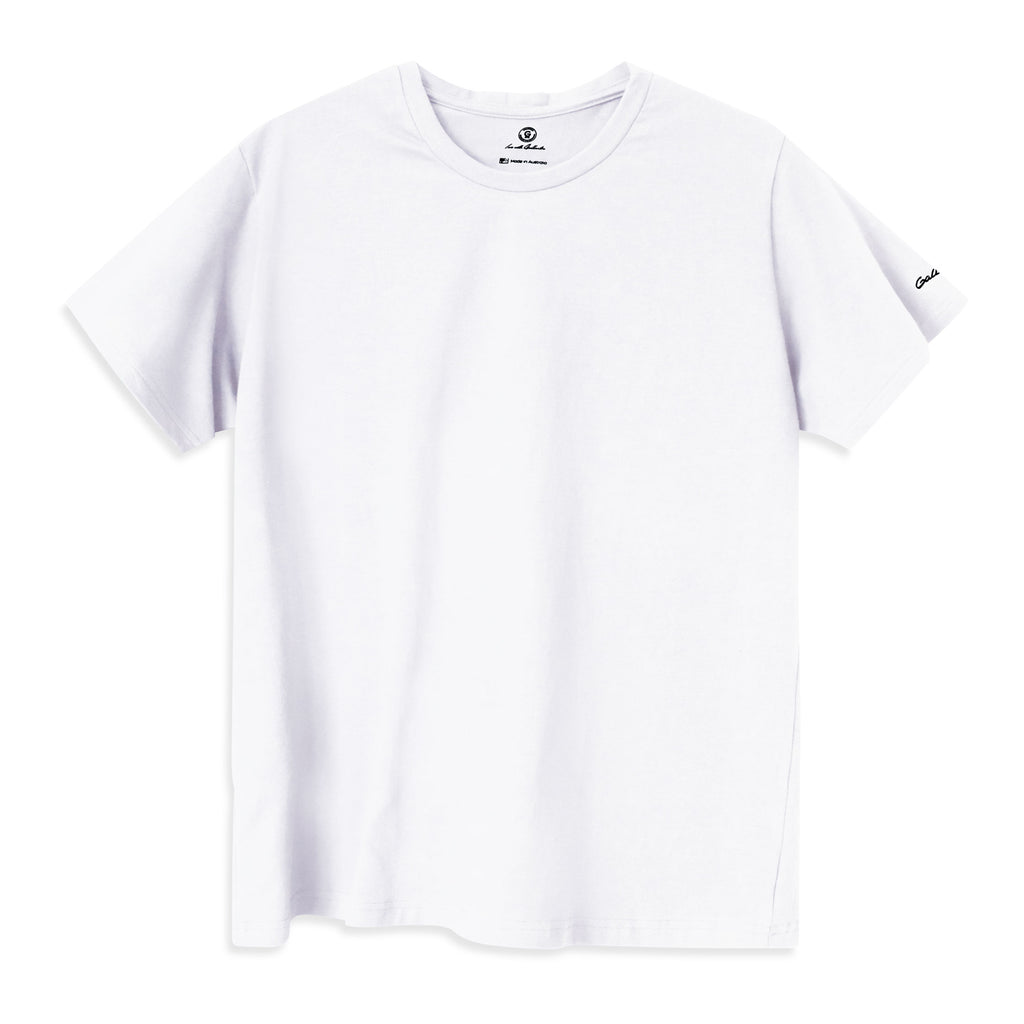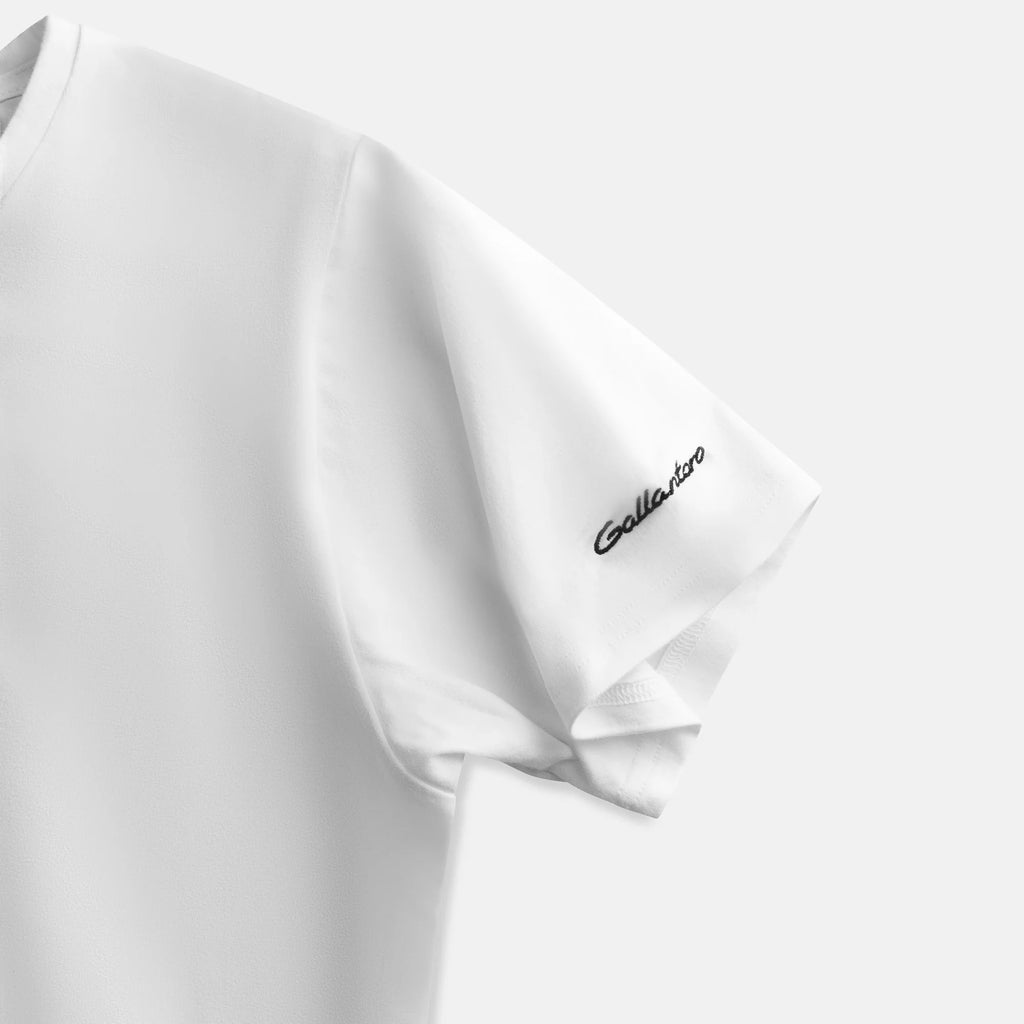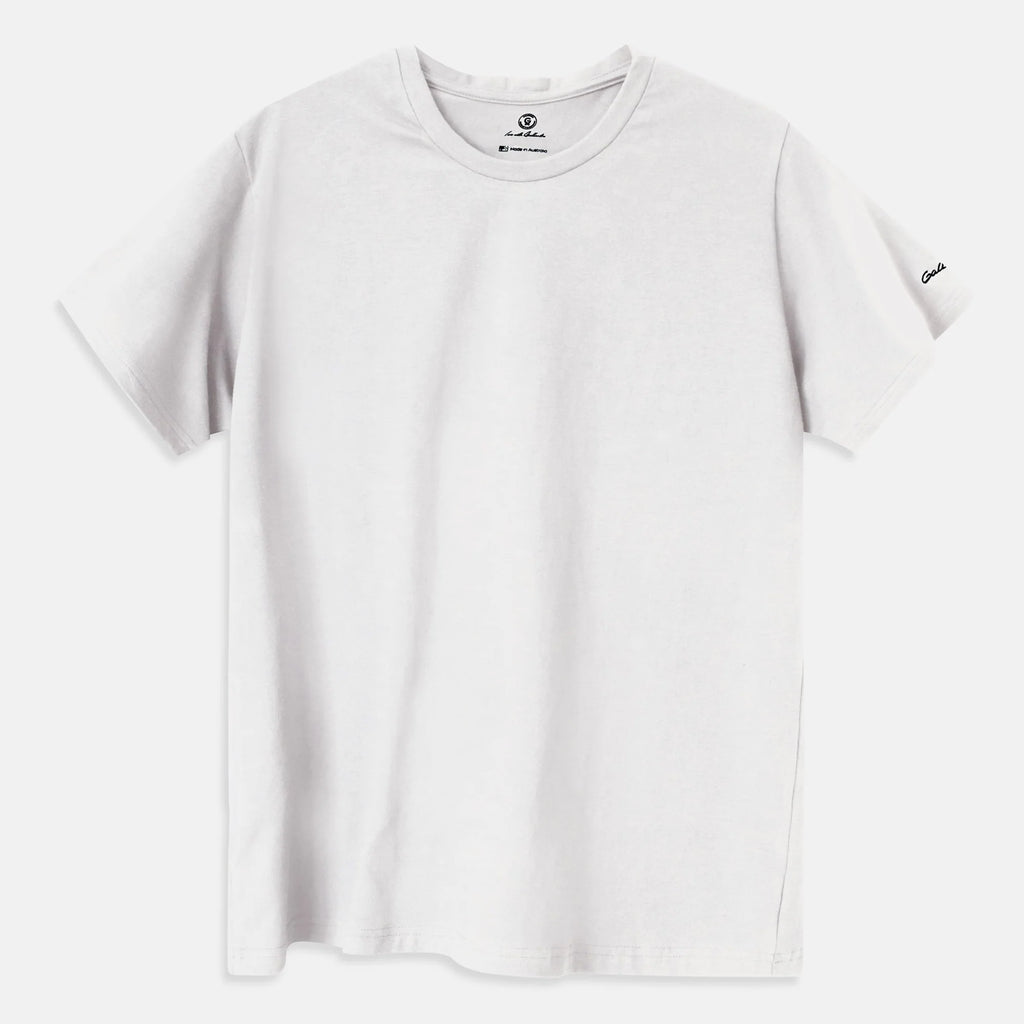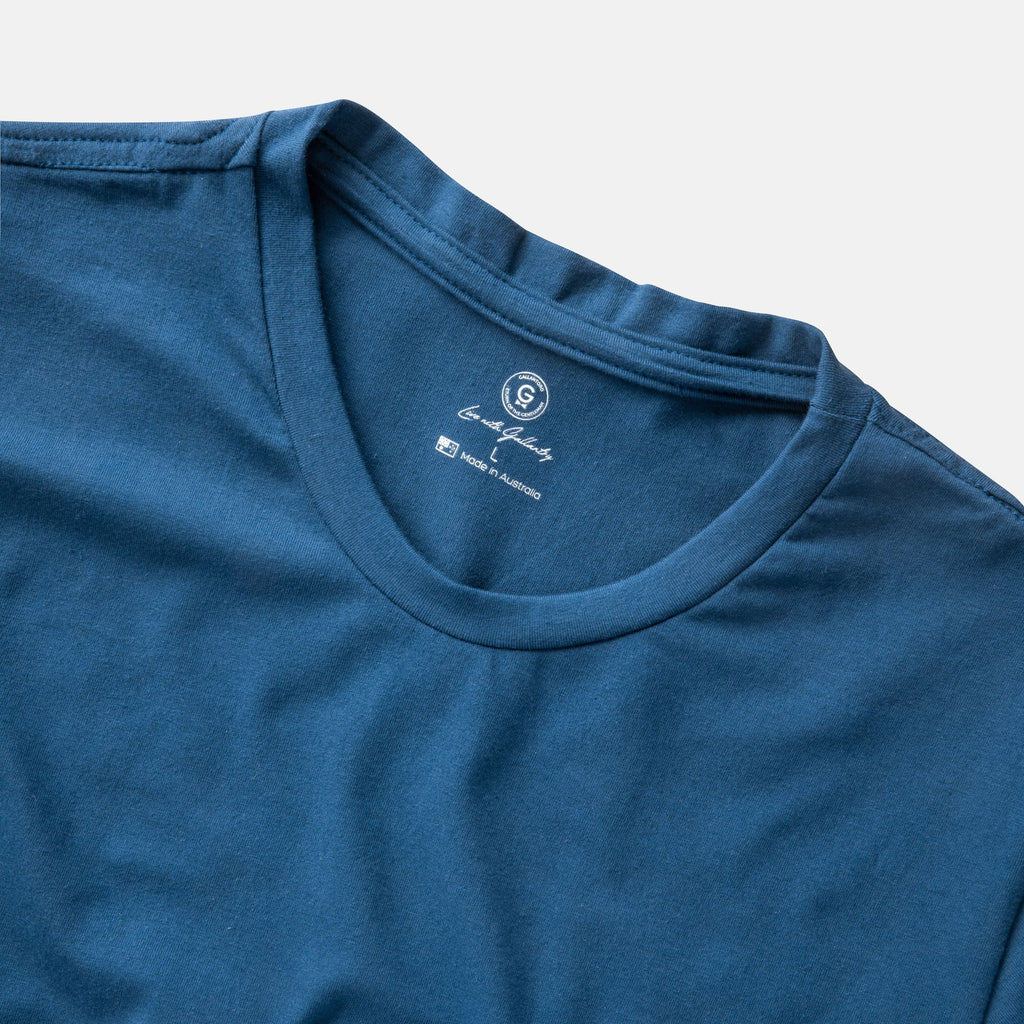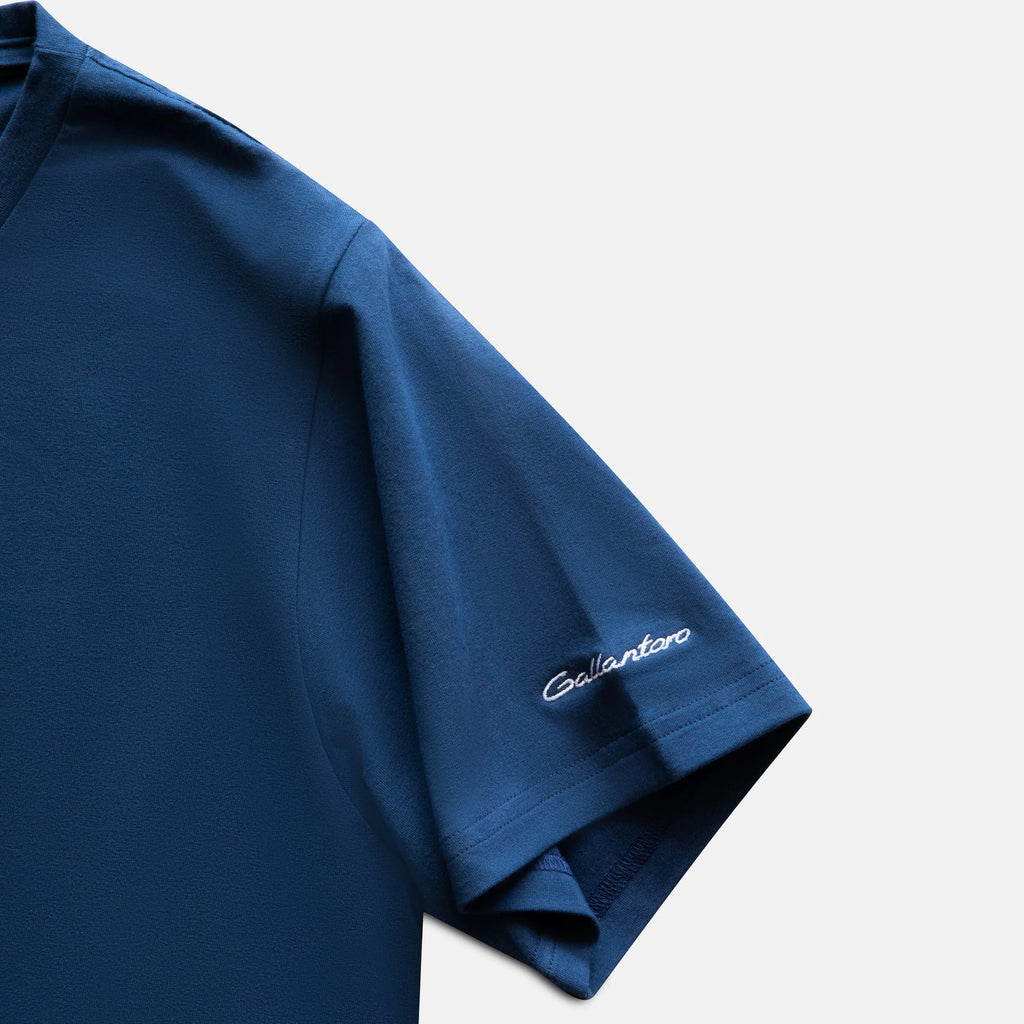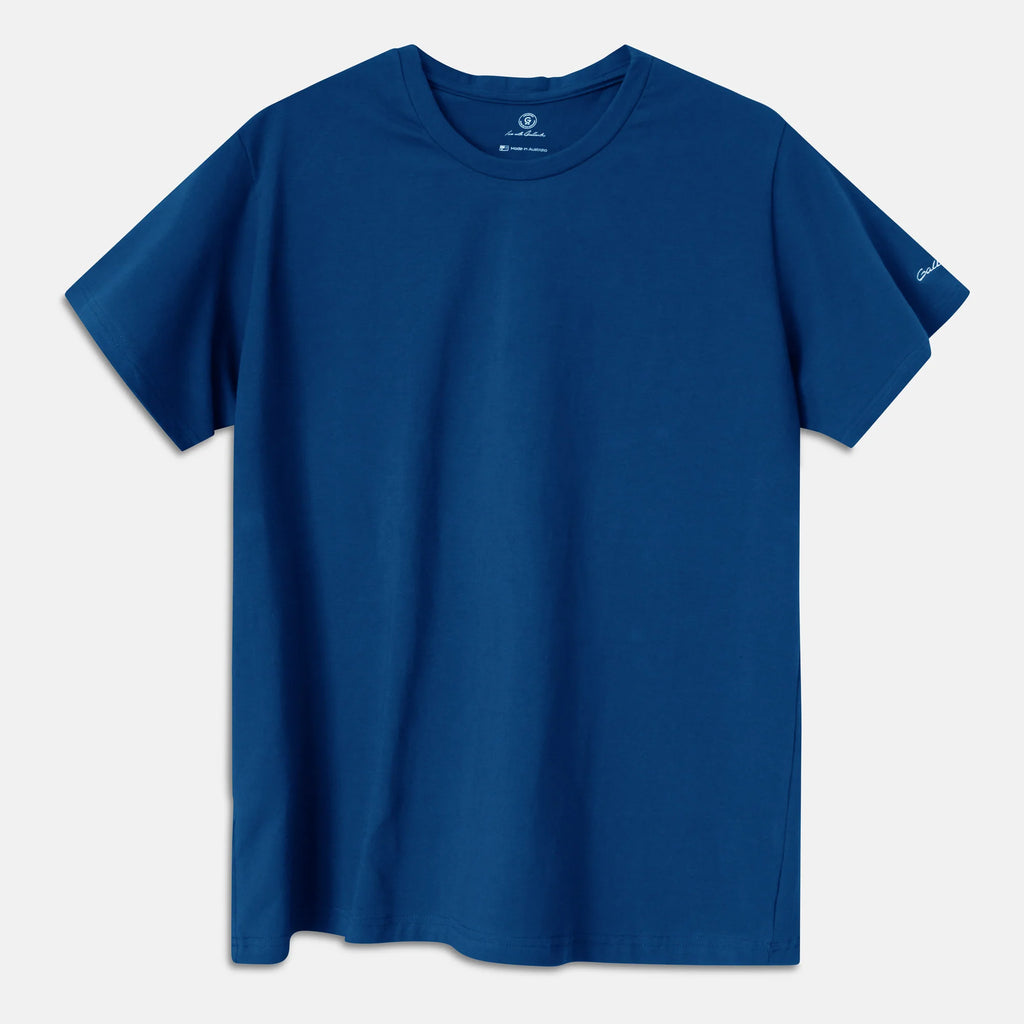Gallantoro 'Brando' Classic Crew
✓ Fast Shipping World Wide
✓ Australian Made
✓ Classic, Comfortable, Masculine
Step into timeless style with the Gallantoro 'Brando' Classic Crew. Made in Australia with a classic athletic fit and luxurious blend of cotton and elastane, this crew shirt will have you standing out from the crowd of run of the mill t-shirts that don't fit or feel right.
- 90% Cotton, 10% Elastane
- Australian Made
- Masculine Fit / not too slim, not baggy
- No Sweat Shop or Fast Fashion Exploits
The History of Men's Tee-Shirts
The earliest T-shirt dates back to sometime between the 1898 Spanish-American War and 1904, when the Cooper Underwear Company ran a magazine ad announcing a new product for bachelors. In the "before" photo, a man averts his eyes from the camera as if embarrassed; he has lost all the buttons on his undershirt and has safety-pinned its flaps together. In the "after" photo, a virile gentleman wears a "bachelor undershirt" stretchy enough to be pulled over the head. "No safety pins — no buttons — no needle — no thread", ran the slogan aimed at men with no wives who lacked sewing skills. It was at this time that the U.S. Navy started issuing them as standard undershirts. 

The t-shirt has become an essential item of clothing in modern times. It's so ubiquitous in world culture that we often forget how relatively new it is. The origins of the t-shirt can also be traced back to the late 19th century when laborers would cut their jumpsuits in half to keep cool during warmer months. It wasn't until 1920 that the term "t-shirt" was added to the English dictionary, thanks to F. Scott Fitzgerald's use of the word in his novel This Side of Paradise.

Although the t-shirt was created in the early 20th century, it was primarily worn as an undershirt until Marlon Brando and James Dean popularized it as a standalone outerwear garment. Brando's appearance in A Streetcar Named Desire in 1950, followed by James Dean in Rebel Without a Cause in 1955, brought the t-shirt to the forefront of fashion, and it became associated with rebellion.



